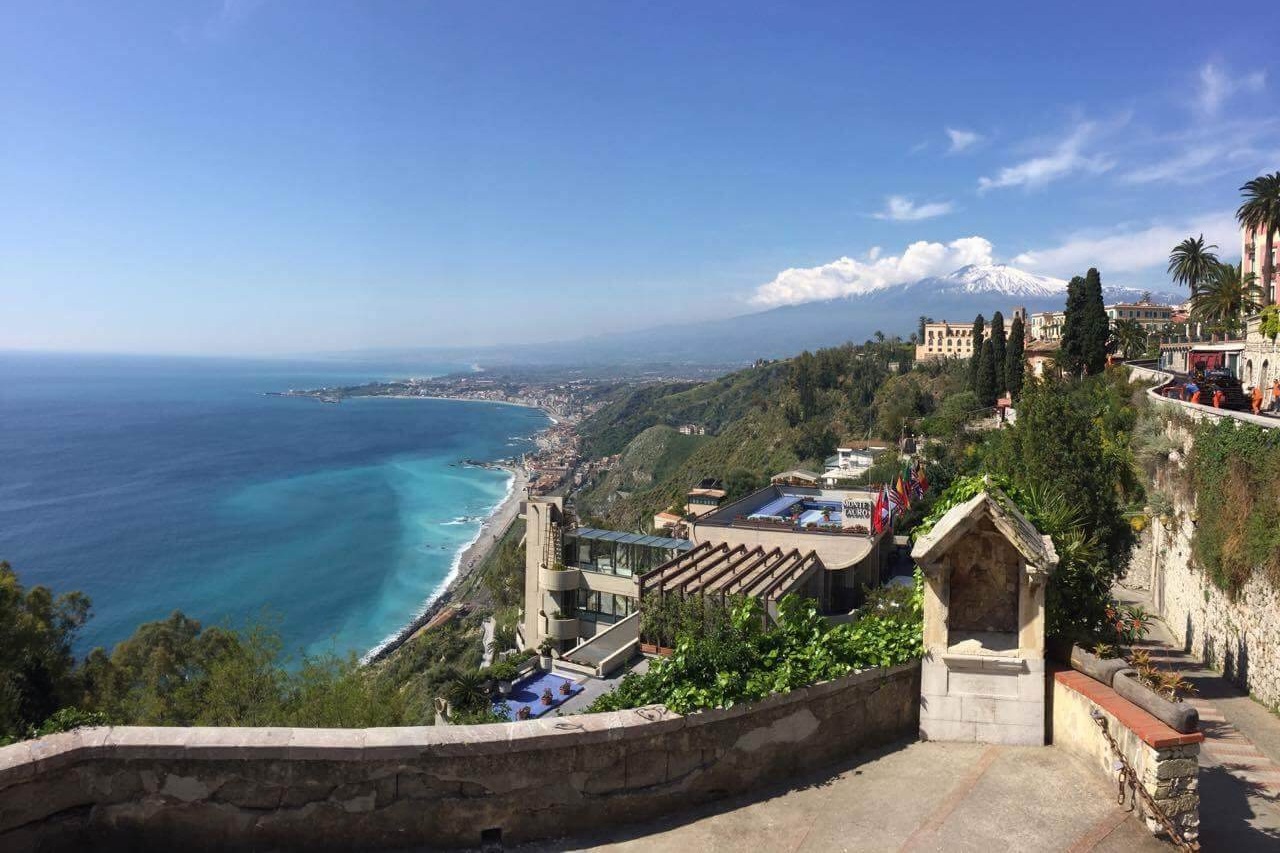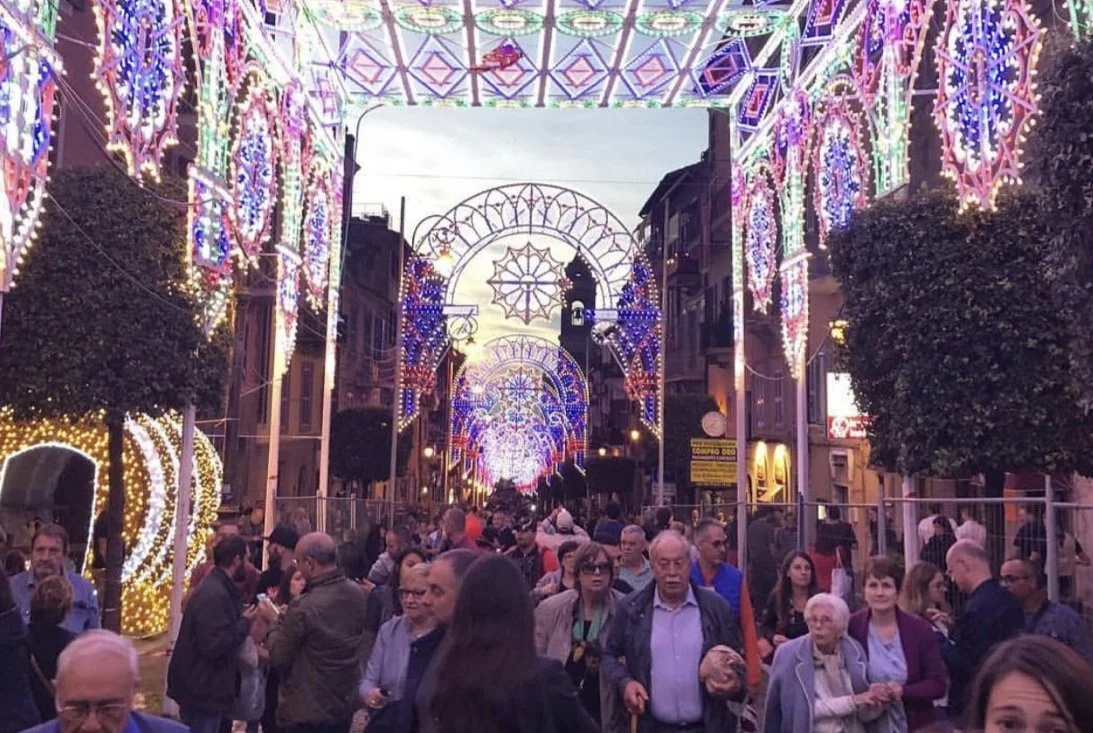Italy's rich heritage in winemaking has made it a top destination for wine enthusiasts from around the globe. With picturesque vineyards, historic wineries, and a remarkable diversity of grape varieties, the country offers a wine experience like no other.
In this article, we invite you on a delightful journey through some of Italy's best places for wine, including Udine in Friuli Venetia Giulia, Marino near Rome, the captivating city of Trieste, Liguaglossa on Sicily's eastern slopes, Gaiole in the heart of Chianti, and the renowned Montalcino in Tuscany.
Udine, Friuli Venetia Giulia:
Nestled in the northeastern region of Italy, Udine boasts a unique wine culture influenced by its proximity to Slovenia and Austria. Known for its white wines, particularly Friulano and Ribolla Gialla, the vineyards here are characterized by their terraced landscapes. Udine sitting, just below the Dolomites, features some stunning snowcap views year-round. Visiting local wineries to sample vibrant wines will offer you some breathtaking views of the Friulian countryside.
Beautiful vineyards in Friuli Venetia Giulia photgraphed by @max_thehuman.
Friuli Venetia Giulia’s viticulture is often overlooked by many. This is due to various factors ranging like geographic location, many travelers prefer close by and famous Tuscany and Piedmont. The ambiguity of the region’s “brand” has left it unbeknown to international travelers. Factors of culture identity play into the mix as well. Udine and the surrounding regions are home to not only Italian, but Slovenians and Austrians too, possibly making it harder to promote local vineyards and wines to an international audience. For this reason alone, we think this region has a lot of promise and may offer any visitor a more authentic look into local viticulture.
Keep going, because we talk more about Friuli Venetia Giulia below!
Marino, Lazio:
Situated just a stone's throw away from Rome, the small town of Marino is a hidden gem for wine lovers. Famous for its Frascati wine, this region has a winemaking history that dates back to ancient Roman times. Stroll through the vineyards, visit historic cellars, and indulge in crisp, dry white wines and elegant reds that perfectly complement the region's traditional cuisine.
Each year, Marino host a brilliant festival called “Sagra di Uva”, translation, “The Grape Festival”, where locals hang off balconies throwing grapes, dancing to music and most importantly… drinking wine.
Marino lighting the night sky during Sagra di Uva.
Sagra di Uva is popular with the younger crowd and party goers from all across the European continent arrive to the town center at night for the rave-like setting with DJ’s blaring mainstream music.
During the day the festival is loved by the town’s locals, and you may find everything from wine samplings to street performers and boutique vendors of all kinds.
We go into more detail about Sagra di Uva in our article Two Day Trips Outside Rome. Enjoy!
Trieste, Friuli Venezia Giulia:
As a bustling port city, Trieste is a vibrant hub for wine enthusiasts. While not primarily known for winemaking, Trieste offers a unique blend of Italian and Slovenian influences. The nearby Collio and Carso wine regions produce excellent white wines, such as Malvasia and Sauvignon Blanc.
Photo of Prosecco, Italy illustrating the unique terraces that characterize Friuli Venezia Giulia vineyards’ landscape.
Travelers to the Trieste region will be surprised to hear one of their favorite wines, Prosecco, is named after Prosecco, Trieste. The beautiful white blends that are harvested in this northern region give the world of wine something to be proud of and is worth exploring. The city's wine bars are lively boast exquisite wines, all while enjoying the stunning Adriatic Sea views.
Liguaglossa, Sicily:
On the eastern slopes of Sicily, the picturesque village of Liguaglossa is a hidden paradise for wine connoisseurs. The region surrounding Mount Etna, Europe's largest active volcano, offers an extraordinary terroir that produces exceptional wines.
Mt. Etna picture from Taormina.
The rich and fertile volcanic soil has produced wines so exquisite that for years travelers come to sample whites, such as Carricante, and robust reds like Nerello Mascalese, which is indigenous to the area. The unstable nature of the volcano creates microclimates that produce an array of wine types and profiles, adding to the area’s diverse collection of maturing grapes. Additionally, higher altitudes can bring longer growing seasons, given Etna does not erupt!
Only in Sicily can you immerse yourself in the breathtaking landscapes of vineyards set against the majestic backdrop of Mount Etna.
Learn more about traveling to Sicily in our article One Week in Sicily!
Gaiole, Tuscany:
Nestled in the heart of the Chianti Classico region, Gaiole is a charming Tuscan town that encapsulates the essence of Italian winemaking. The vineyards here produce some of Italy's most celebrated wines, including Chianti Classico and Sangiovese, wines which are popular in the United States and around the world!
Fog covering a vineyard in Gaiole, Tuscany. Photo Credit: @iamengjell
Chianti can be combined with a wide range of foods and has become relatively affordable thanks to marketing and branding. Tuscany, as we all know, has captured the first time visitor’s praise for many year due to it’s breadth in viticulture and extentisive wine industry.
Take a tour of the region's renowned wineries, visit ancient castles, and savor the rich flavors of the famous Tuscan reds.
Montalcino, Tuscany:
The enchanting town of Montalcino is synonymous with one of Italy's most revered wines, Brunello di Montalcino. Located in the scenic hills of Tuscany, this wine region is known for its centuries-old winemaking traditions. Visit historic estates and vineyards, where Sangiovese grapes are transformed into elegant, full-bodied wines. The wine cellars of Montalcino offer a truly immersive experience into the world of Italian winemaking.











